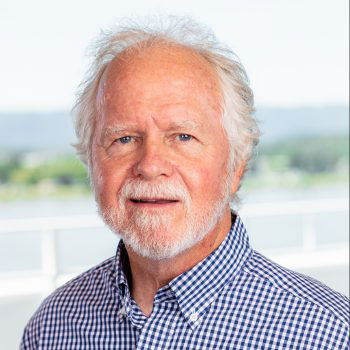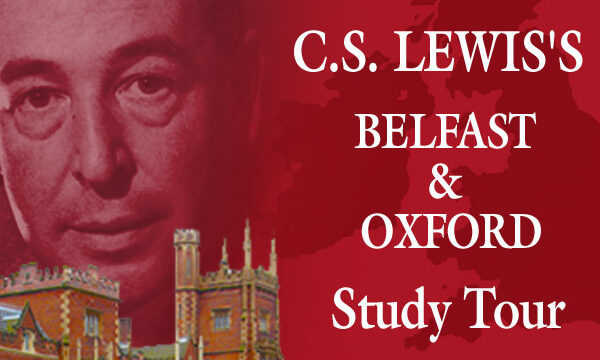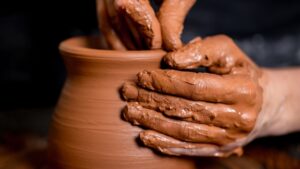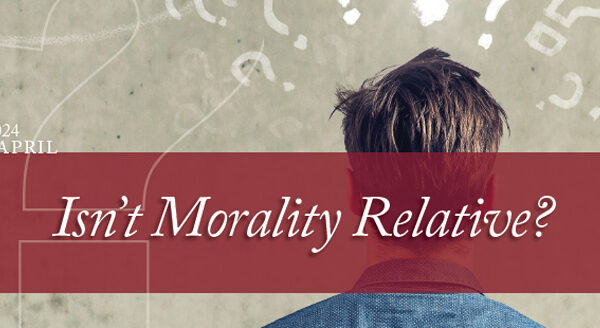Back to series



On Why the Arts Matter
Click here to open a Print - Friendly PDF
It is an arresting image, one that draws us in with unusual curiosity. What might it mean? Was there really?
A Schindler for the artists?
After Spielberg’s famous film on the businessman whose ingenuity, courage, and “list” saved several thousand Jews from the Nazi’s gas ovens became known the world over, his story lit a fire within each of us, allowing us to reflect on our own times and places about the importance of living lives formed by the conviction that it is possible to do something remarkably right—even against the world, the flesh, and the devil.
But a Schindler for the artists? Yes, and his name was Varian Fry. Prep school, Harvard, the New York publishing world, and then a trip to Germany in the 1930s. With eyes to see he noticed the fissures, the cracks in the sidewalk of German society, where Jews were already being hounded, being treated as something less than human, not deserving the common care of a neighbor. What he saw got under the skin of his soul, and he did not forget.
When the war finally came, with Hitler advancing across Europe, Fry and his friends talked and talked and talked, wondering aloud and together what could be done, what might be done, what ought to be done. Thomas Mann the writer, Reinhold Niebuhr the theologian, and others joined with Fry in his deliberations, knowing that something must be done—but what? They decided on the artists. Knowing that they could not save everyone, they determined that they would attempt to rescue the artists of Europe; in their own words, “saving the culture and civilization of Europe” even as it burned.
Fry raised funds in New York, came to Washington to gain political backing, and with $30,000 strapped to his leg, he went to Marseilles, which had become a gathering place for artists fleeing Nazi intimidation. Upon his arrival he went to the U.S. Consulate Office, where he was met with a mixed response. The Consul was angry at his idea, reflecting the State Department’s position that Vichy France was not to be confronted. The U.S. had not yet entered the war, and did not want to antagonize its ally France, even as the U.S. watched France enter into increasingly compromised relations with Germany. In addition, the Consul resented Franklin Roosevelt being president, and that Fry had Eleanor’s support only fueled the flame of his fury.
To Fry’s surprise, the Consul’s assistant took him aside and offered help. That was a critical moment, as without someone with power and resource in Marseilles stepping in, Fry’s ability to do what he envisioned would have been short-circuited.
Presenting his list of the names of those he wanted to bring out of Europe, rescuing them from the jaws of the German Reich gone awry, with substantial help he began to make contacts, and to develop his plans. Playing a life-or-death version of “cat and mouse” for months with the Vichy government and their Nazi overlords, Fry and his colleagues imagined a way out for thousands of Jews—principally and especially Jews who were also Europe’s cultural treasures, the painters, poets, playwrights, the novelists and musicians. Some are known to us today, as their contributions did not end, horribly and tragically, in a gas oven. Among them, many of the artistic and intellectual luminaries of our age: artists Marc Chagall, Max Ernst, and Marcel Duchamp, poet André Breton, sculptor Jacques Lipchitz, harpsichordist Wanda Landowska, writers Arthur Koestler, Heinrich Mann, and Franz Werfel, the legendary muse Alma Mahler Werfel, philosopher Hannah Arendt, and the cellist Pablo Casals.
 But why the artists? What is it about the arts, and those who create them, that makes Fry’s story— “Varian’s War” as one film has called it—a story worth telling, and re-telling? His courage was commendable, in and of itself. But his strategy? When so many might have been “saved,” when so many might have been identified and put on “the list”?
But why the artists? What is it about the arts, and those who create them, that makes Fry’s story— “Varian’s War” as one film has called it—a story worth telling, and re-telling? His courage was commendable, in and of itself. But his strategy? When so many might have been “saved,” when so many might have been identified and put on “the list”?
War is never anything less than ugly, and its repercussions are felt by real people with real lives, men and women, boys and girls, with homes and hopes and histories. World War II was that kind of war, as was Varian Fry’s. But his war was framed by the most humane commitments, rather than the most horrific—as was Hitler’s against the world. Rather than the extermination of one’s neighbor, his motive was love of neighbor. He saw himself as “implicated” in the complex mess of history, knowing that he was responsible for what he knew. What could be done?
And in Fry’s pondering the possibility of doing something rather than nothing, he chose artists.
To Reflect and Promote
Thirty years ago I first heard these words: the arts both reflect and promote a society’s hopes and dreams, its attitudes and thought-patterns, its understanding of what human life is and ought to be.
The very idea intrigued me, as I had never thought of culture in those terms. I had read many biographies and novels as a boy, as well as seen my share of Walt Disney and John Wayn movies, growing up in the 1950s. and ‘60s as I did; but I was plainly more of a consumer of those arts, and did not understand much about their power within me and over me, the way they were shaping my own sensibilities along the way.
And then the words reflect and promote were offered, and my understanding of the world began to change. As a college student at the time, I was increasingly aware of the world in which I lived and moved and had my being. From the relative innocence of adolescence I was coming into the self-consciousness of adulthood, forming my own convictions about what I would believe and how I would live. By grace, I was the son and grandson of Christ-loving people, and as I moved into my maturity I was drawn more and more deeply into the faith of my forebears.
But woven through those years was also a deepening interest in the arts; never for me a vocation, but more a strong interest in what they represented in terms of culture-shaping power. Years have passed, and my calling has been clarified: I am a teacher, coming alongside people to help them understand the world and their place in it. And dayby-day, my life seems full of artists and the arts, listening to them as they wonder, walking along with them as they work. I am more interested than ever in what their artistry represents in terms of the ways that we see ourselves, making sense of self and society. William Barrett was right, in his classic study of existentialism, Irrational Man:
Every age projects its own image of man into its art. The whole history of art confirms this proposition, indeed this history is itself but a succession of images of man. A Greek figure is not just a shape in stone but the image of man in the light of which the Greeks lived. If you compare, feature by feature, the bust of a Roman patrician with the head of a medieval saint— as Andre Malraux has done with a spectacularly sharp eye in his Voices of Silence –you cannot account in some formal terms for the difference between them: the two heads stare at each other and cancel each other out; they give us two different images of the destiny and possibilities of being a man…Whenever a civilization has lived in terms of a certain image of man, we can see this image in its art.
The question which echoes across the centuries is this: what image does our age project?
Artists are Upstream
Several years ago I was asked to speak at a retreat for chiefs-of-staff from Capitol Hill, representing men and women from the Senate and the House. They were eager to think about their responsibilities in light of their faith. What does the gospel of the kingdom mean for the complexities of political life?
I addressed the topic of responsibility itself, wondering aloud with them about where it comes from, and what is required to sustain it. Why do some people see complexity, and choose to engage it? Why do some people hear about messes and troubles, and choose to respond, seem able to respond—and others choose to walk away? The very words—able to respond—of course, form the word responsibility.
In the presentation I pondered the Czech playwright-who-became-president Vaclav Havel’s insight, “The secret of man is the secret of his responsibility.” And I walked that back into the biblical vision, asking all of us to wonder, “What does the Bible say about this?” Finally I reflected for a bit on the film, “Magnolia,” which in a remarkably perceptive way probes the question of responsibility.2 After beginning with three vignettes which seem to unequivocally conclude that we live in a universe of chance and chaos, the film is a long argument for another universe, another view of human life under the sun, viz. that this world is one where human beings have the responsibility to make choices, and those choices are for blessing and curse, rippling on into history. The question the film asks is this: what then does it mean to be human?
A few months later the same group asked me if I would lead them in another retreat, this time to watch and discuss the film. And so we did, with chiefs-of-staff as well as representatives from Prison Fellowship’s Wilberforce Forum. The film is three hours long, and then we spent another three hours discussing it. The most far-reaching idea was this: artists are upstream.
This was the consensus around the table by these thoughtful, serious, politically-placed people who are also thoughtful, serious culturally-engaged Christians. Their argument was that if we are to affect our culture, we have to understand that we do not shape culture; at our best we respond to it. In Washington, we make laws, we enforce laws, we interpret laws. But we do not shape the hearts and minds in our culture. Who does? Artists do. Not on their own, as clearly families, communities, schools, and churches play a critical role, but the vocation of artist is crucial in forming how we see ourselves— “the image of man in light of which we live” as Barrett argues—both reflecting and promoting a vision of the meaning of human life. And this is specially so for the generation that is under 30, who are so profoundly connected to pop culture, the audiovisual world of the early 21st century.
Not for a moment was this a step away from a strong responsibility for what happens culturally, or for why and how it happens, As I listened, it was something more to do with being wise as serpents, while being innocent as doves; it was something more about thinking strategically for the kingdom, for how we take up the task of leavening our world.
On the one hand it required an unusual humility, saying aloud that Washington and its citizens are a crucial part of the story—but are not the point of the story. For a city so often rightly accused of its arrogance and pride, it was refreshing to see these men and women of true faith assess their own place, seeing it both for what it is and for what it is not. For blessing and curse, Washington is the capitol city of the world at the dawn of the 21st century. And so there is much to steward in that responsibility. But at the same time, there are other cities that matter too, tremendously: New York, Los Angeles, Nashville, and a host of other places, small towns and big cities, where songs and stories are written, where paintings and poems are created, where dance and sculpture is being imagined—where, in fact, culture is being formed.
 They summed it up this way: if we are to be part of God’s work in the history of our time, then we have to begin relationships with those who are shaping the soul of the society—its hopes and dreams, its attitudes and thought-patterns, its understanding of what human life is and ought to be—and those are artists, the musicians, the novelists, the filmmakers, the poets, the actors, the painters.
They summed it up this way: if we are to be part of God’s work in the history of our time, then we have to begin relationships with those who are shaping the soul of the society—its hopes and dreams, its attitudes and thought-patterns, its understanding of what human life is and ought to be—and those are artists, the musicians, the novelists, the filmmakers, the poets, the actors, the painters.
As I listened that night, trying to help them understand what they had seen and what it meant for them and for all of us, I put it this way: artists get there first. They are feeling their way, antennae out in front, sensing where we are all going—for blessing and for curse. That is the calling of the artist, and it has always been this way. As Barrett has argued: if one wants to understand Greek culture in the 4thcentury B.C., then the surest window in is to study its sculpture, as it is there that the hopes and dreams are most plainly seen. And so if one wants to understand 12th-century A.D. Italy, then study its paintings, read its poetry, as it is there that its attitudes and thought-patterns are manifest.
And if one wants to understand this cusp-of-thecentury, where the 20th has ended and the 21st has begun, then we have to pay attention to the filmmakers and musicians, as it is in their movies and songs where we will feel the yearnings of what human life is and ought to be. Why? Artists get there first.

Steven Garber
ProfessorSteven Garber is the Senior Fellow for Vocation and the Common Good for the M. J. Murdock Charitable Trust. As a teacher, he has recently served as Professor of Marketplace Theology and Director of the Masters in Leadership, Theology and Society at Regent College, Vancouver, BC. he is the author of several books, including Visions of Vocation: Common Grace for the Common Good, his most recent is The Seamless Life: A Tapestry of Love and Learning, Worship and Work. One of the founders of the Wedgwood Circle, and has been a Principal of the Washington Institute for Faith, Vocation and Culture. He completed his PhD in the Philosophy of Learning at Pennsylvania State University.

 COPYRIGHT: This publication is published by C.S. Lewis Institute; 8001 Braddock Road, Suite 301; Springfield, VA 22151. Portions of the publication may be reproduced for noncommercial, local church or ministry use without prior permission. Electronic copies of the PDF files may be duplicated and transmitted via e-mail for personal and church use. Articles may not be modified without prior written permission of the Institute. For questions, contact the Institute: 703.914.5602 or email us.
COPYRIGHT: This publication is published by C.S. Lewis Institute; 8001 Braddock Road, Suite 301; Springfield, VA 22151. Portions of the publication may be reproduced for noncommercial, local church or ministry use without prior permission. Electronic copies of the PDF files may be duplicated and transmitted via e-mail for personal and church use. Articles may not be modified without prior written permission of the Institute. For questions, contact the Institute: 703.914.5602 or email us.
-
Recent Podcasts
The Side B Stories – Dr. James Tour’s story
by Jana Harmon, James Tour on April 12, 2024From a secular Jewish home, scientific scholar and...Read More
-
Why are Christians so Bad?
by Paul Joen on April 5, 2024
-
Questions That Matter Podcast – Dai Hankey and Gospel Hope for Weary Souls
by Randy Newman, Dai Hankey on April 5, 2024
-
Recent Publications
Isn’t Morality Relative?
by Christopher L. Reese on April 1, 2024It is widely accepted in the Western world...Read More
-
Do Muslims and Christians Worship the Same God?
by Andy Bannister on March 1, 2024
-
Artificial Intelligence and Its Impacts on Humanity
by John Lennox on February 13, 2024
0
All Booked
0.00
All Booked
0.00
All Booked
20599
GLOBAL EVENT: 2024 Study Tour of C.S. Lewis’s Belfast & Oxford
https://www.cslewisinstitute.org/?event=global-event-2023-study-tour-of-c-s-lewis-belfast-oxford-2&event_date=2024-06-22®=1
https://www.paypal.com/cgi-bin/webscr
2024-06-22

Next coming event
Days
Hours
Minutes
Seconds
GLOBAL EVENT: 2024 Study Tour of C.S. Lewis’s Belfast & Oxford
On June 22, 2024 at 12:00 pmat Belfast, Northern Ireland & Oxford, EnglandTags
Speakers

Steven Garber
Professor
Team Members

Steven Garber
ProfessorSteven Garber is the Senior Fellow for Vocation and the Common Good for the M. J. Murdock Charitable Trust. As a teacher, he has recently served as Professor of Marketplace Theology and Director of the Masters in Leadership, Theology and Society at Regent College, Vancouver, BC. he is the author of several books, including Visions of Vocation: Common Grace for the Common Good, his most recent is The Seamless Life: A Tapestry of Love and Learning, Worship and Work. One of the founders of the Wedgwood Circle, and has been a Principal of the Washington Institute for Faith, Vocation and Culture. He completed his PhD in the Philosophy of Learning at Pennsylvania State University.




